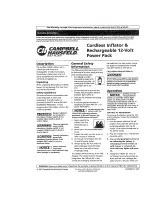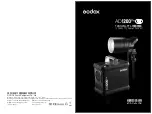
Mounting
The LPS II must be securely fastened before use. We recommend using Clayton Power LPS II
mounting bracket (not supplied as standard) for secure fastening. When installing the LPS II,
sufficient space must be left around it to ensure uninterrupted airflow.
NOTE:
The Lithium Power Supply must not be mounted upside down or on the side.
NOTE:
The LPS has forced air cooling. Make sure air can flow freely around the device.
Power cable
A country-specific power cable is included with the LPS II. The cable comes in three different
types, UK, Europe or Denmark (UK, EU, DK). Make sure you use the correct cable for the specific
area.
Transport
The Lithium Power Supply is classified as class 9 hazardous material according to UN3480
and tested according to UN 38.3. The Lithium Power Supply must always be transported in its
original, certified packaging. Transporting the Lithium Power Supply requires trained personnel
in accordance with ADR, RID and IMDG, exceptions may apply to private and service transport,
check with the relevant authority. For air transport (IATA), the packaging must comply with P965.
The original packaging complies. For shipping defective batteries, contact your dealer for more
information.
Maintenance
Minimum maintenance is required for the LPS II to perform at maximum. We recommend that you
periodically:
Charge your LPS II by plugging it into a 230V socket (not necessary when solar panels are
permanently connected).
Make sure all terminals are tightened as specified.
Charge 100% before putting the device into storage. During storage, the device must be fully
recharged every 6 months (every 3 months for CL200X) to avoid deep discharge (deep discharge
is not covered by the warranty).
Service
Your LPS II contains no parts that can be serviced by the user to maintain the warranty. If you need
service, contact Clayton Power or one of our authorised service providers. More details on service
options can be found on our website.
4





































